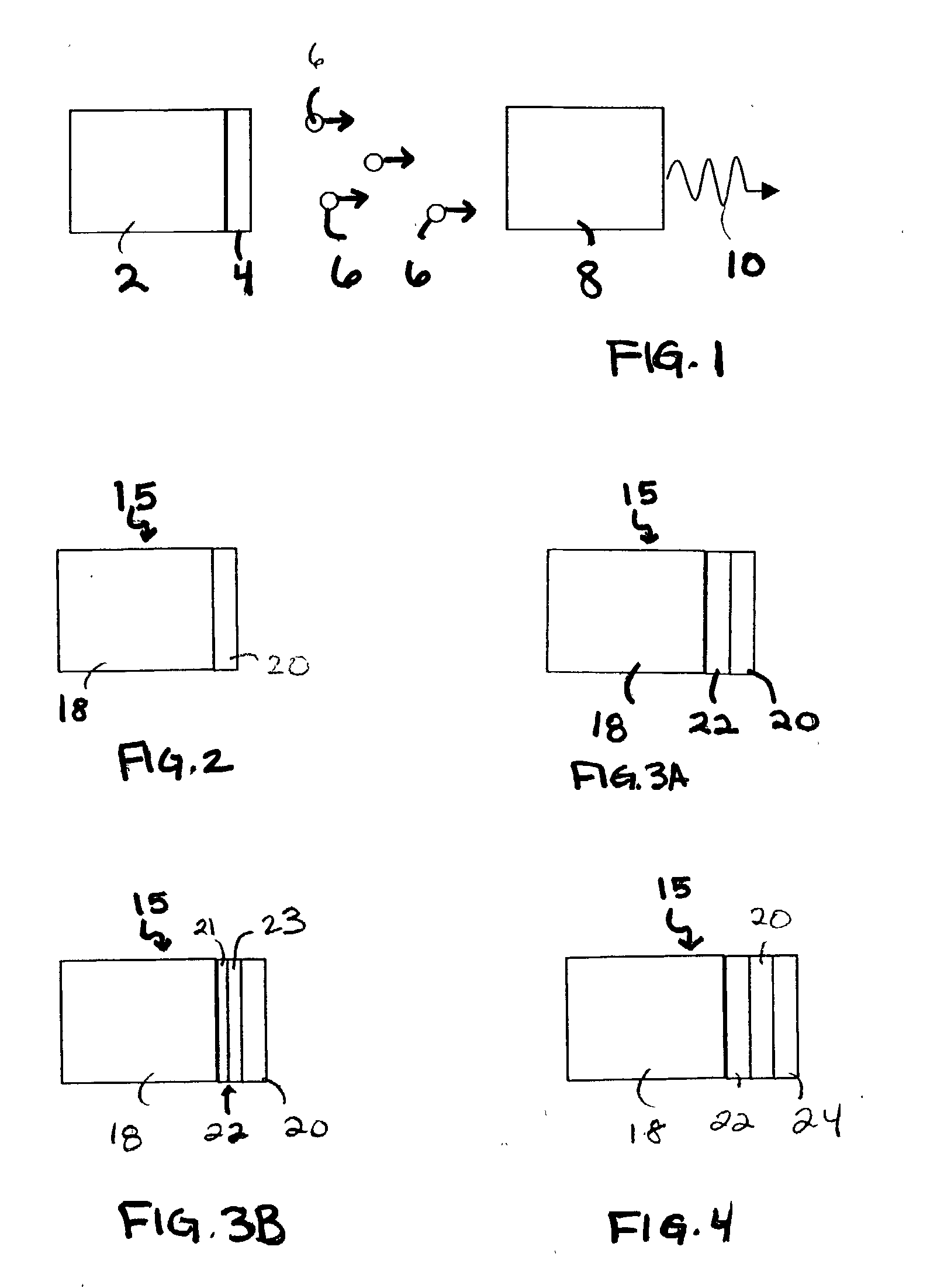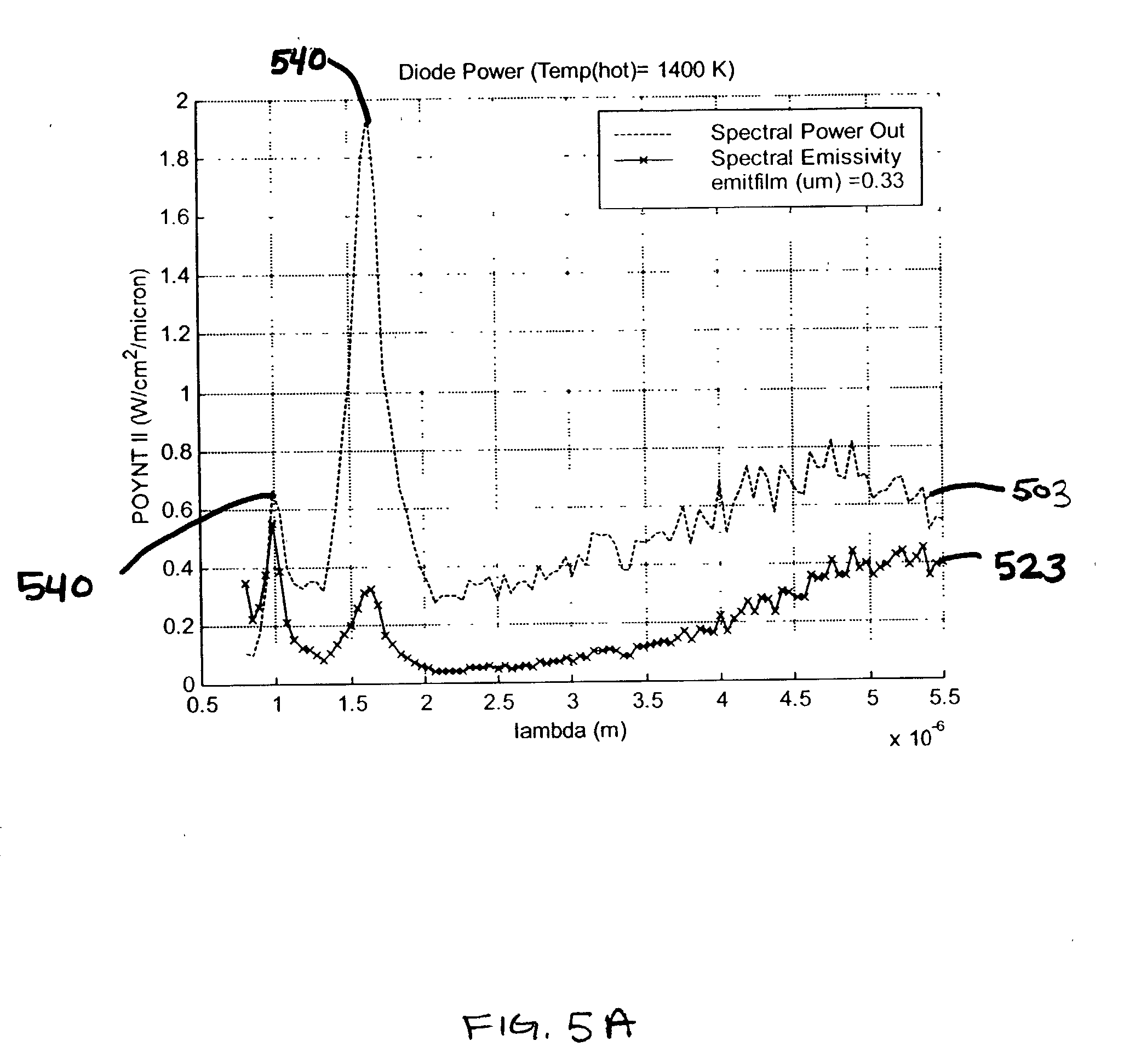Method and device for selectively emitting photons
a technology of thermophotovoltaic system and selective emitter, which is applied in the direction of semiconductor devices, basic electric elements, electrical equipment, etc., can solve the problems of reducing the conversion efficiency, and reducing the overall conversion efficiency of input heat into output electricity, so as to increase the emission of photons
- Summary
- Abstract
- Description
- Claims
- Application Information
AI Technical Summary
Benefits of technology
Problems solved by technology
Method used
Image
Examples
Embodiment Construction
[0050] Thermophotovoltaic (TPV) systems convert thermal energy to electric energy. As shown in FIG. 1, a TPV system typically includes a heat source 2, an emitter 4 in thermal communication with the heat source 2, and a photovoltaic converter 8. The heat source 2 provides thermal energy to the emitter 4, which emits photons 6 in response. The photovoltaic converter 8 collects and converts some of these photons 6 into electric energy 10.
[0051] The invention, in one embodiment, is directed to emitters for TPV systems. An emitter, according to the present invention, emits photons having a selected wavelength that is suitable for conversion into electrical energy by a photovoltaic converter 8 (e.g., a wavelength within a wavelength range, such as from about 1.2 microns to about 1.5 microns, or from about 1.5 microns to about 2 microns). In general, the emitter of the invention includes a thin layer of a semiconductor material in physical or radiant contact with a heat source. Depending ...
PUM
 Login to View More
Login to View More Abstract
Description
Claims
Application Information
 Login to View More
Login to View More - R&D
- Intellectual Property
- Life Sciences
- Materials
- Tech Scout
- Unparalleled Data Quality
- Higher Quality Content
- 60% Fewer Hallucinations
Browse by: Latest US Patents, China's latest patents, Technical Efficacy Thesaurus, Application Domain, Technology Topic, Popular Technical Reports.
© 2025 PatSnap. All rights reserved.Legal|Privacy policy|Modern Slavery Act Transparency Statement|Sitemap|About US| Contact US: help@patsnap.com



